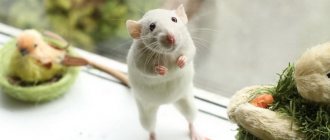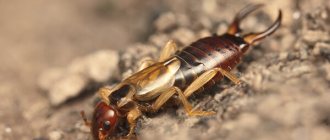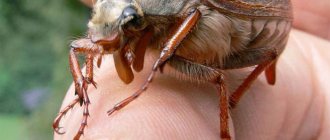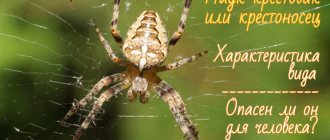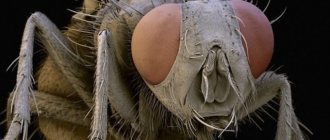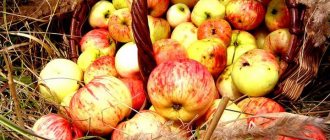- Latin name : Apodemus agrarius
- Kingdom : Animals
- Type : Chordata
- Class : Mammals
- Order : Rodents
- Family : Mouse
- Genus : Forest and field mice
- Species : Field mouse
- Weight : 21 g
- Body length : 12.5 cm
- Gestation period : 20 days
- 3.1 Range
- 5.1 Burrows
Description
Appearance
The body length is 10-13 cm, the tail length reaches 70% of the body length. The muzzle is elongated, pointed, the eyes are dark. The ears are small and folded forward. The body is round in shape, the fur is thick.
Color
— Advertising —
The upper body is colored reddish-ocher, reddish-brown or reddish-brown. A clear and distinct black or brown stripe runs down the center of the back. The bases of the hair on the back are dark. The belly is light, whitish, the base of the hair is dark. The sides are reddish in color with a clear border. In old voles, the base of the hair on the back becomes very light, and sometimes the hair turns grey. House mice are black.
Male and female: differences
Sexual dimorphism is not typical for field mice. There are no pronounced differences in the appearance and size of males and females.
What does it eat?
Field mice feed on plant (seeds, berries, green parts of plants, nuts, grains) and animal (insects) food. The specific composition of the diet depends on habitat and season. Thus, in winter, when it is difficult to obtain food, mice move into cellars and food warehouses, causing harm to agriculture and industry.
Distribution
Area
— Advertising —
Field mice live in Central and Eastern Europe, in the south of Western Siberia, China, Mongolia, Primorye, the Korean Peninsula and Taiwan. In western Europe, field mice live only in the eastern and central regions, west of the Baltic coast and Denmark to Finland in the north, in southern Siberia, Korea, and China. Widely distributed from the Baltic States to the coast of the Black and Azov Seas up to Sukhumi. They are found in the Ciscaucasia and western Caspian region, in Kazakhstan in the Far East.
Habitats
Rodents usually live in bushes and meadows. In anthropogenic landscapes they are found in gardens, parks, and cemeteries. The refuges of field mice are both natural shelters and holes that they dig on their own. In wet and flooded areas, rodents build nests for themselves in grass or bushes.
Common Field Mouse Species
There are such types of field mice as common, red, forest and underground, which differ in their places of distribution. For example, the common vole inhabits predominantly the Eurasian continent. The red-backed vole lives in Asia and is found in the USA and Canada. The distribution range of the forest vole includes the steppe zone of Eurasia and North America. The underground vole is found only in Europe. The field mouse is easily distinguished from other types of mice by the black stripe located along the center of the back; it is distinguished from mouse mice by its shorter tail, and from Daurian hamsters, on the contrary, by its longer tail. But it can be quite difficult to classify the color variations of the field mouse subspecies themselves, since they arise depending on the geographic latitude of the area and the climatic characteristics of the region where the rodents live. Basically, color changes occur in the latitudinal direction and from west to east. From north to south in Europe, the color of the vole's fur varies from pale and dull in Belarus, the Baltic states and Germany, to bright reddish in the south of Ukraine and the north of the Caucasus. The average size of field mice also changes in this direction; rodents become larger to the south of their distribution area. The bright red-colored mice of southern Europe eastward to the Urals, Semirechye and Altai, and western Siberia do not lose the brightness of their color, but the reddish tint is partially replaced by chestnut-brown. Along the southern borders of their habitat, field mice are always lighter and brighter in color.
Lifestyle
In its vast range, the vole gravitates mainly to field and meadow cenoses, as well as to agricultural lands, vegetable gardens, orchards, and parks. Avoids continuous forest areas, although it is found in clearings, clearings and edges, in open forests, in riverine thickets of bushes, and forest belts. Prefers places with well-developed grass cover. In the southern part of its range, it gravitates towards wetter biotopes: floodplain meadows, ravines, river valleys, although it is also found in dry steppe areas, on fixed sands outside deserts. In the mountains it rises to subalpine and alpine meadows at an altitude of 1800-3000 m above sea level. Avoids areas subject to intense anthropogenic pressure and transformation.
In warm weather, it is active mainly at dusk and at night; in winter, activity is around the clock, but intermittent. Lives in family colonies, usually consisting of 1-5 related females and their offspring of 3-4 generations. The home ranges of adult males occupy 1200–1500 m² and cover the home ranges of several females. In their settlements, voles dig a complex system of burrows and trample a network of paths, which in winter turn into snow passages. Animals rarely leave paths, which allow them to move faster and navigate more easily. The depth of the burrows is small, only 20-30 cm. The animals defend their territory from alien individuals of their own and other species of voles (even to the point of killing). During periods of high abundance, colonies of several families often form in grain fields and other feeding areas.
The common vole is distinguished by territorial conservatism, but if necessary, during harvesting and plowing fields, it can move to other biotopes, including stacks, stacks, vegetable and granary warehouses, and sometimes to human residential buildings. In winter, it makes nests under the snow, woven from dry grass.
The vole is a typically herbivorous rodent whose diet includes a wide range of foods. Seasonal changes in diet are typical. In the warm season, it prefers the green parts of cereals, asteraceae and legumes; occasionally eats mollusks, insects and their larvae. In winter, it gnaws the bark of bushes and trees, including berries and fruits; eats seeds and underground parts of plants. Makes food reserves reaching 3 kg.
Reproduction
The common vole breeds throughout the warm season - from March-April to September-November. In winter there is usually a pause, but in closed places (stacks, stacks, outbuildings), if there is enough food, it can continue to reproduce. In one reproductive season, a female can bring 2-4 broods, a maximum of 7 in the middle zone, and up to 10 in the south of the range. Pregnancy lasts 16-24 days. A litter averages 5 cubs, although their number can reach 15; the cubs weigh 1-3.1 g. Young voles become independent on the 20th day of life. They begin to reproduce at 2 months of life. Sometimes young females become pregnant already on the 13th day of life and bring the first brood at 33 days.
The average life expectancy is only 4.5 months; By October, most voles die; the young of the last litters overwinter and begin breeding in the spring. Voles are one of the main sources of food for many predators - owls, kestrels, weasels, ermine, ferrets, foxes, and wild boars can also eat voles.
Field mouse behavior
Field mice are nocturnal, during this period they become especially noisy and active, but during the day voles usually sleep. These are mobile rodents, which are characterized by long seasonal feeding migrations. Jumping run. They know how to swim, but they don’t like to swim.
Burrows
The structure of burrows in field mice is quite simple, the most complex of them are distinguished by the presence of 3-4 exits, 1-2 nesting chambers, which are located at a shallow depth. Occasionally, voles set up spherical grass nests as housing.
Wintering
Along with other species of mice, field mice actively stockpile for the winter. They eat quite little, and hide the remains of the food they find at the bottom of nests or in burrows, carefully burying them in the ground. Voles chew on something all the time because their teeth are constantly growing and need to be sharpened. In autumn and winter, field mice are found in populated areas, as well as in stacks, haystacks, straw, on threshing floors, and in barns. Rodents do not hibernate in winter.
Forest Vole Survival Tools
Nature has not equipped voles with sharp teeth, large claws, or muscular legs, but these animals have found a way to survive - they are extremely fertile.
Every year, forest voles give birth to 3-4 offspring.
At one time, a vole gives birth to about 11 babies. Already at 1.5 months, young voles are also ready to reproduce.
One pair of these rodents reproduces up to 1000 times throughout their life, bringing into the world an entire army. This is one of the best survival tools.
Forest voles are good at climbing bushes and trees.
Interesting facts about the rodent:
The field mouse is considered a major agricultural pest because it eats grain crops. In winter, this type of rodent constantly stays close to grain stacks and straw sweeps. In addition, voles damage crops such as potatoes, carrots, tomatoes, watermelon, and sunflowers. The field mouse is also a natural carrier of pathogens such as tularemia, leptospirosis, tick-borne typhus fever, erysipelas, and hemorrhagic nephrosonephritis. For these reasons, people try to get rid of the proximity of these rodents, for which they use mousetraps, ultrasonic repellers, which are laid out in warehouses, and special poisons. One of the humane ways to get rid of voles is to scatter ash in the premises, which mice avoid, or to lay out heads of garlic, the smell of which field mice also cannot stand and immediately leave the room. Cats are also purchased to combat field mice.
Reproduction
One can only envy the fertility of these rodents.
The most fruitful season for breeding is spring, but they are not far behind at other times of the year. Over the course of one year, the female bears up to 4 litters, each of them containing up to 8 pups. The gestation period lasts on average 22 days. Babies are born blind and completely helpless, but they develop quickly and reach puberty at the age of 2 months, becoming completely independent.
At home they can live up to 7 years, but in the wild their life expectancy rarely exceeds 2 years.
For the most part, this is due to the fact that in their natural habitat they have many enemies. They are hunted mainly by birds of prey, most often owls. But many mammals are not averse to feasting on field mice, for example, animals such as foxes, ferrets, weasels or martens exterminate these rodents with enviable speed, as soon as they get in their way.
These mice live in large colonies.
The area of one burrow can reach 10 sq.m. and have dozens of exits.
In one hole there are up to 10 nests and about 20 “storage chambers” for supplies.
Signs of appearance:
- Burrows. The presence of a home is perhaps the first thing that all mammals care about, and the appearance of depressions in the ground is the first alarm bell, notifying about new neighbors;
- Traces of teeth.
These rodents leave them almost everywhere, since their teeth grow throughout their lives, which means there is a need to gnaw on something all the time.

